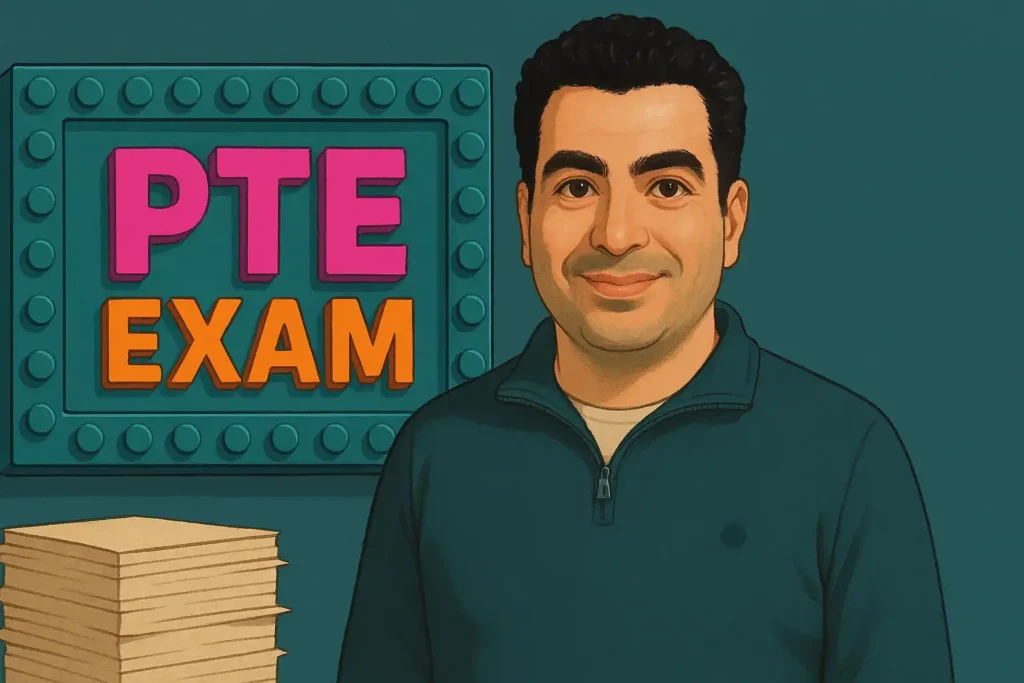Welcome to your one-stop resource for everything related to the PTE Exam! Whether you’re just starting your journey or looking to refine your skills, this comprehensive guide will walk you through all aspects of the Pearson Test of English (PTE). From understanding what the exam is all about to tips on how to ace it, we’ve got you covered.

The PTE (Pearson Test of English) is a widely recognized English language proficiency exam that helps non-native speakers prove their ability to use English in academic and professional settings. The test assesses your listening, reading, speaking, and writing skills. It’s often required for university admissions, visa applications, and job opportunities in English-speaking countries like the United States, the UK, Canada, Australia, and more.
You might be wondering, “Why should I choose the PTE exam over others like IELTS or TOEFL?” Here are some key reasons why the PTE could be a great fit for you:
Now that you know why PTE might be the right choice for you, let’s dive deeper into the details.

The PTE exam is divided into three main parts: Speaking & Writing, Reading, and Listening. Below, we’ll go over each section so you know exactly what to expect.
In this section, you’ll be tested on your ability to communicate clearly in spoken and written English. It combines two skills in one section to make the most of your time.
In the reading section, you’ll be tested on your ability to understand written texts in English. This section includes different types of questions designed to check your comprehension skills.
In the listening section, you’ll need to understand spoken English from various contexts, such as lectures, conversations, and academic discussions. The questions will be based on audio clips that you listen to during the exam.
The PTE exam uses a scoring system from 10 to 90 for each section. Your final score is an average of your individual section scores. The score you need will depend on the institution or organization you’re applying to.
10 – 29: Very limited ability
30 – 49: Limited ability
50 – 69: Competent ability
70 – 89: Good ability
90: Excellent ability
The test is designed to measure your real-life ability to use English, so your score will reflect how well you can function in an English-speaking environment.


Now that you know what to expect, let’s talk about how you can prepare effectively for the PTE exam.
Familiarizing yourself with the test format is essential. Knowing what to expect in each section will reduce your stress on test day and help you allocate your time more wisely.
One of the best ways to prepare for the PTE is by practicing with sample tests. The more you practice, the better you’ll understand the types of questions that are likely to appear on the test. Try to complete full practice tests under timed conditions to simulate the actual exam experience.
A strong vocabulary is essential for both the speaking and writing sections. The more words you know, the better you’ll be at describing images, summarizing texts, and answering questions clearly.
Since PTE is computer-based, you’ll need to get comfortable speaking into a microphone. Practice speaking clearly and confidently, and work on your pronunciation and intonation. You can use language learning apps or record yourself speaking to evaluate your fluency.
To improve your listening skills, listen to a variety of English audio materials like podcasts, TED talks, and academic lectures. Focus on understanding the main points, details, and the speaker’s tone.
The PTE exam is fast-paced, so it’s important to manage your time wisely. Make sure you don’t spend too long on any one question, and allocate your time to each section based on the number of questions.
If you feel that you need more personalized help, consider enrolling in a PTE preparation course. These classes provide tailored lessons to help you strengthen your skills and boost your confidence.
Once you finish your exam, you’ll receive your results within 2 business days. You’ll be able to access your score online and share it with universities, immigration authorities, and other institutions.